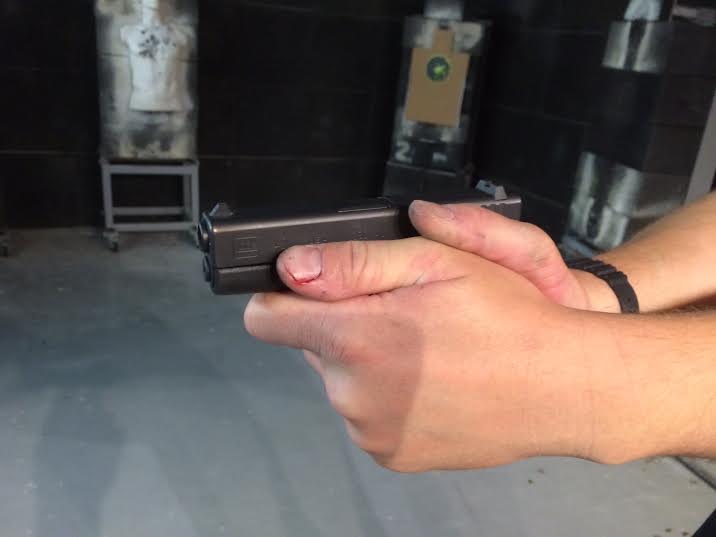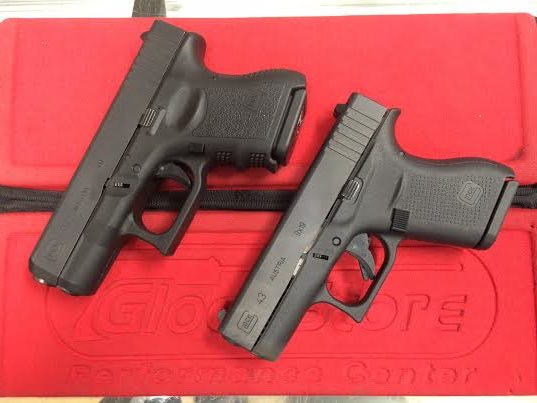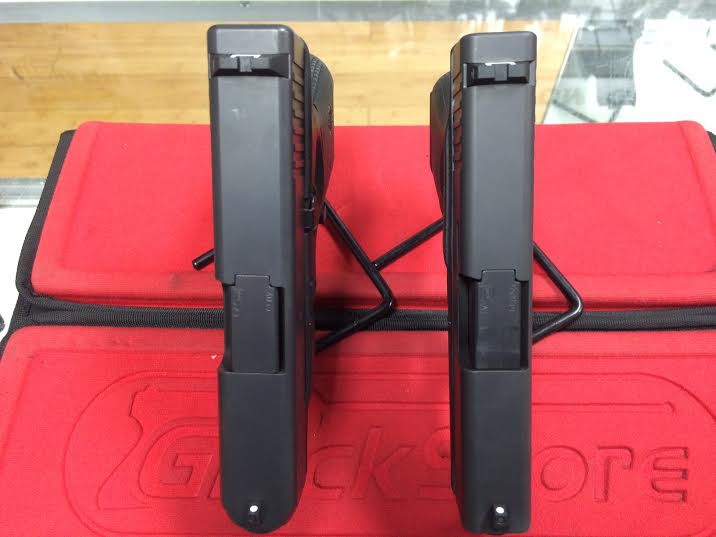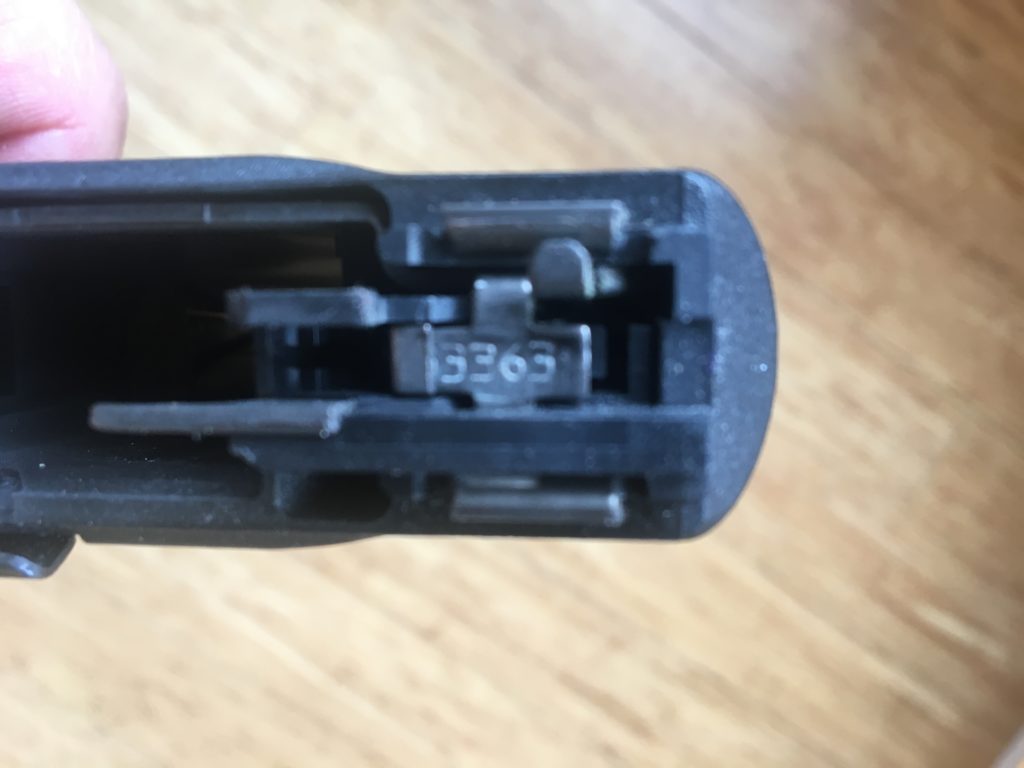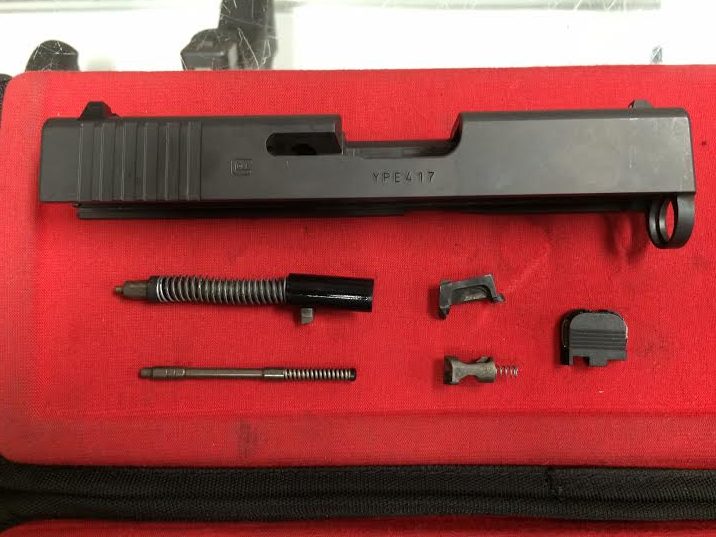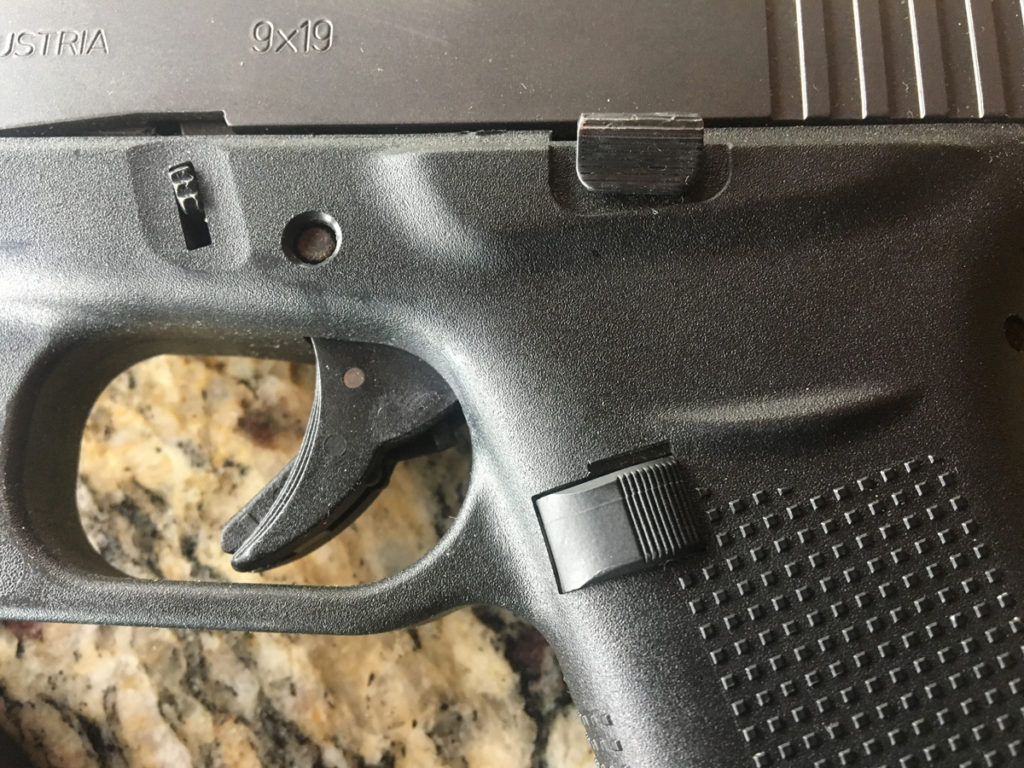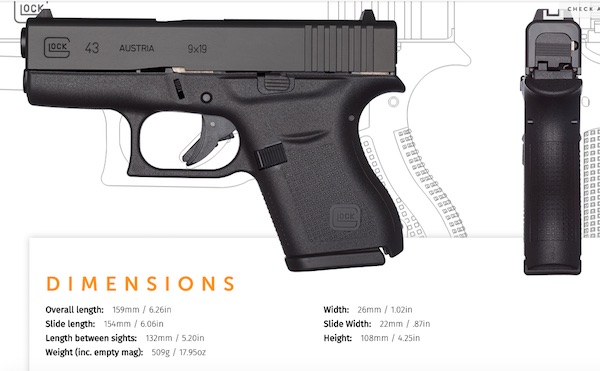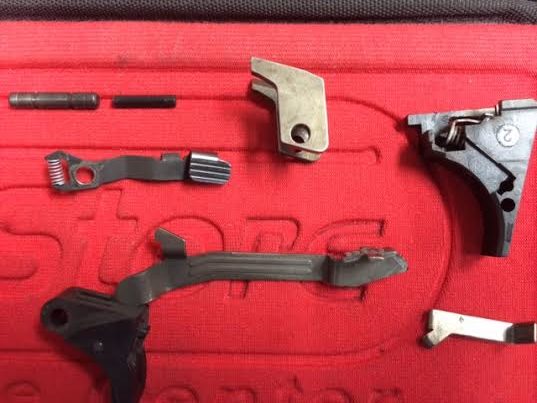By Mark Miller
The G-42 and G-43 are Glock’s concealed carry optimized single stack pistols in .380 and 9mm. Both models have been highly successful, Glock recently produced the one-millionth Glock 43. That is a lot of happy Americans and bears closer examination.
Glock claims that the G-43 was the most highly desired and anticipated release in GLOCK’s history. Is it worth the hype? I wasn’t so sure. Never a fan of pocket pistols. I found them too small of grip and their minor calibers did not inspire confidence. The Glock 43 changed my mind. I like the grip better than the Glock 26 and I shoot it well with 9mm JHPs.
Glock’s previous double stack designs like the Glock 26 and Glock 19 were very well received, but for years, American shooters have asked for a single stack for better grip and easier carry. Glock has come through with a well thought out and highly functional pair of pistols.
In the 1970s, Gaston Glock made curtain rods. I am sure they were kick ass curtain rods, but he probably felt unfulfilled as a designer. He got a contract to make field knives for the Austrian military and in 1980 he bought an injection molding machine to make handles and sheaths in his garage. Little did he know that he was about to change everything.
In 1980, while Jimmy Carter was boycotting the Moscow Olympics and waiting on Iran to release American hostages, Gaston was busy changing the gun world. The Austrian Army, logically thinking that they shouldn’t be fighting the Russians (again) with Nazi-made Walther P-38s, laid out the criteria for the new service pistol. The design parameters were well thought out and produced a revolution in material science and design.
The two most import criteria were a limit of 58 parts (because that was the number the P-38 had) and a 1911-esque requirement to disassemble and maintain it with no tools. Gaston felt inspired.
In a modern world where 85% of U.S. law enforcement carries polymer frame pistols, it is hard to imagine that in the mid-20th century all handguns guns were made of steel and wood. Plastic was synonymous with cheap and fake. The major gun companies were all in the running for this contract. They didn’t even see Glock coming.
Glock had never designed a firearm, but he knew some things the gun guys didn’t, like how to make polymer components (polymer is another name for plastic, which sounds stronger and better). He talked to gun people and looked at other successful designs. In April of 1981 Gaston applied for an Austrian patent in April 1981 for the Glock 17, so named as his 17th patent.
The Glock 17 was a double stack 9mm with a 17-round magazine. It had internal safeties and, because of some clever use of plastic, it was inexpensive, light and reliable.
When Bill Clinton signed the Violent Crime Control and Law Enforcement Act of 1994, United States federal law prohibited the manufacture of magazines for civilian use which held more than ten rounds. During this dark period, Glock built a compact double stack 9mm, the Glock 26, which made a virtue of necessity, using a 10-round magazine, the new maximum. The G-26 was genius because the internals and magazine profiles for all 9mm Glocks were the same. The differences were the lengths of the barrels and magazine wells.
The assault weapons ban was so successful in eliminating violent crime that it was allowed to expire in 2004 (we’re being sarcastic). Even though America was practically crime free, concealed carry became more accepted and demand grew for a smaller is better single stack design.
I went to the Glock Store in San Diego and gave both the Glock 42 and 43 guns a good look, then shot them on the store range. I will talk primarily about the 9mm G-43 and summarize my experiences. Spoiler alert: I couldn’t see any significant differences between the two, except the rounds in the magazine.
I am an early adopter of the Glock and a graduate of Glock Instructor and armorers courses. When I saw the Glock go down to the frame using only a punch, I was hooked. All the non-1911 guns were filled with tiny springs and screws. The Glock was simple and modular. Magazines of the same caliber would go into any Glock of smaller capacity and stick out the bottom.
The double stack mag is a little thin for some hands and thinner is easier to hide. The G-43 single stack lacks full compatibility with its 9mm cousins, but under the hood, it is pure Glock.
Some of the parts are a little different, but if you know how to disassemble any Glock, you can sort out the G-42 and G-43 very easily. It disassembles just like all the others, but the parts are slimmer and the magazine is a 6 round single stack. It has all the virtues of a Glock in a neat little package.
I have always said that you should pick a handgun like you pick a pair of shoes. You have to find something that fits before you worry about fashion. The G-43 grip has a built-in beavertail design which places the hand high on the back strap.
I didn’t expect to like it. My hands are pretty big and most small guns feel strange. The G-43 has a 1911-like feel and supports a thumbs-high grip, even with man hands. The grip is textured and provides nice tactile feedback.
On double stack guns, I always needed an extended mag release. The G-43 has a big catch like the gen 4 guns. It is easy to find and use.
The six-round polymer magazines are well designed, and they fit in a pocket with more comfort and conceal-ability. The laws of physics being what they are, the six-round mags are small and light, but they only hold six rounds.
Firing the Glock 42 and 43 is like shooting the G-26 and other subcompacts. The gun’s weight and grip design change the way energy is transmitted to the hand. It makes recoil easy to manage. Using self-defense JHP ammo, the difference between the recoil of the .380 and 9mm was barely noticeable.
The standard sights are regular polymer Glock sights. This is the only part of the gun I changed for carry. My favorite sights are the F8 night sights from XS Sights. The orange circle grabs your eye in daylight for a fast high contrast sight picture. At night, the comforting nuclear glow of tritium front and back.
The trigger feels like a standard Glock 5.5lb trigger. Light enough to shoot, heavy enough to be safe. With other Glocks, you can change the connector to lighten the trigger. The 42 and 43 have a different connector so you get what you get. Polishing parts would help clean things up.
Glocks have three safeties. The Glock “Safe Action” is comprised of an external integrated trigger safety and two automatic internal safeties: a firing pin safety and a drop safety. The shooter does nothing to manipulate the safety except pull the trigger.
The traditional way to make a barrel is to cut lands and groves into a tube with a broaching machine. With all the machine guns headed for the front in WW2, the Nazis didn’t have time for that, so in 1939, they invented the hammer-forged barrel. A hole is drilled in a steel tube and it is placed on a tungsten carbide mandrel with the rifling pattern ground into its surface. The barrel/mandrel combo is then placed between two opposing power hammers. The barrel is rotated and beaten until the inside takes the shape of the mandrel.
Hammer forging produces the Glock female polygonal rifling with a right-hand twist. This bore provides a better gas seal around the projectile, which provides consistency in muzzle velocities and increased accuracy.
The caliber choice between .380 and 9mm is yours to make. Modern .380 ammo is greatly improved, but I don’t see a good reason not to go with the bigger caliber. The recoil is virtually the same and magazine capacity is equal.
The Glock 42 and 43 do not disappoint. They are thin and have an elegant feel, optimized for conceal-ability yet still shoot well. If you are looking at a 24/7 carry gun, stop by your Glock dealer locator and try one on for size.
The Glock 43 compares well to the popular Glock 26. To see the stats side by side, check the Glock provided table below:
To give you a better idea of the size of these guns, I have provided the pictures of the G-42 and G-26 for comparison (above).
The following data is drawn from the us.Glock.com.
Comparison Table Glock 43 Glock 42 Glock 26
CALIBER/SYSTEM 9×19 / Safe Action .380 AUTO / Safe Action 9×19 / Safe Action
LENGTH 159 mm / 6.26 in. 151 mm / 5.94 in. 165 mm / 6.49 in.
HEIGHT 108 mm / 4.25 in. 105 mm / 4.13 in. 106 mm / 4.17 in.
WIDTH 26 mm / 1.02 in. 24 mm / 0.94 in. 30.00 mm / 1.18 in.
BARREL HEIGHT n/a n/a 32 mm / 1.26 in.
BETWEEN SIGHTS 132 mm / 5.20 in 125 mm / 4.92 in. 137 mm / 5.39 in.
BARREL LENGTH 86 mm / 3.39 in. 82.5 mm / 3.25 in. 87 mm / 3.42 in.
WEIGHT (Unloaded) 509 g / 17.95 oz. 390 g / 13.76 oz. 615 g / 21.71 oz.
WEIGHT (Loaded) 634 g / 22.36 oz. ~490 g / ~17.29 oz. 740 g / 26.12 oz.
TRIGGER PULL ~2.5 kg / ~5.5 lbs. ~25 N / ~5.5 lbs. ~2.5 kg / ~5.5 lbs.
TRIGGER TRAVEL ~12.5 mm / ~0.49 in. ~12.5 mm / ~0.49 in. ~12.5 mm / ~0.49 in.
BARREL RIFLING right hand, hexagonal right hand, hexagonal right hand, hexagonal
LENGTH OF TWIST 250 mm / 9.84 in. 250 mm / 9.84 in. 250 mm / 9.84 in.
MAGAZINE CAPACITY(STANDARD) 6 6 10
Click here to visit Glock
